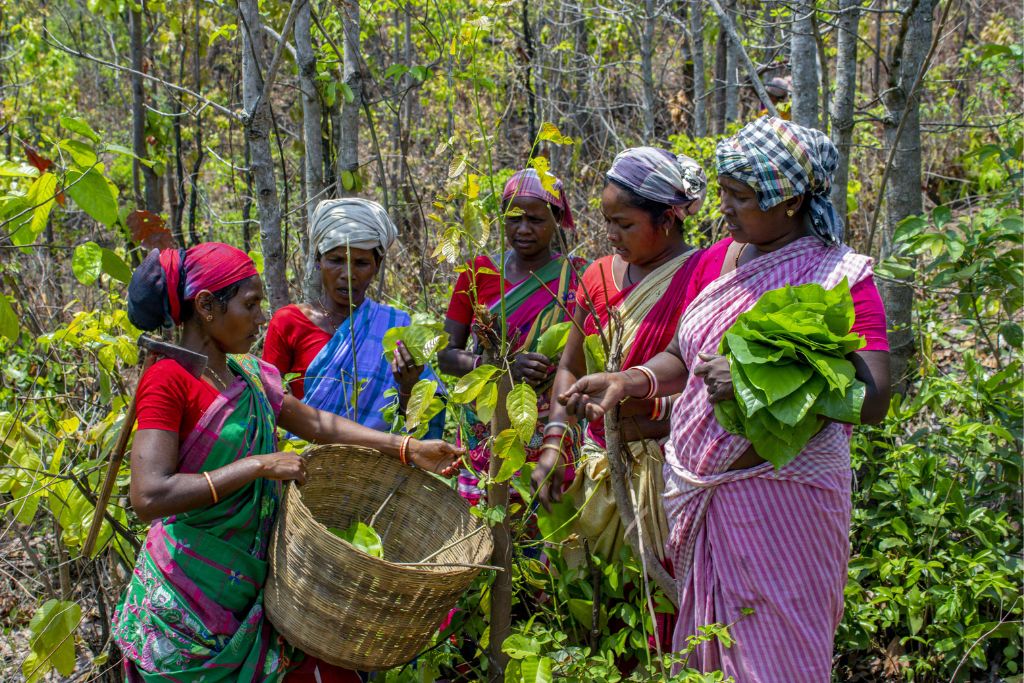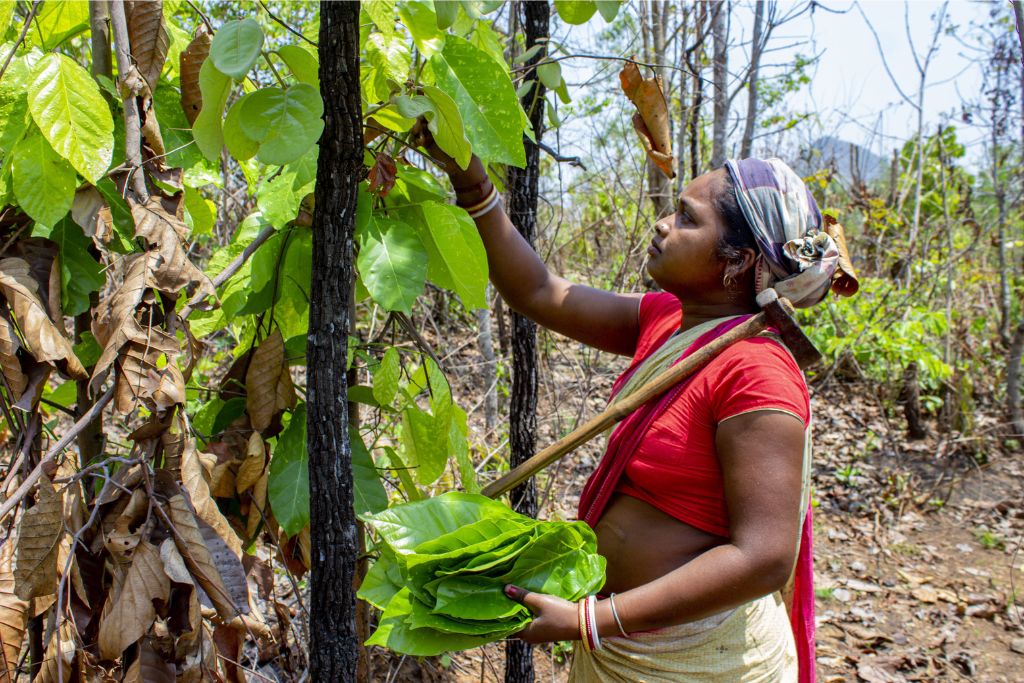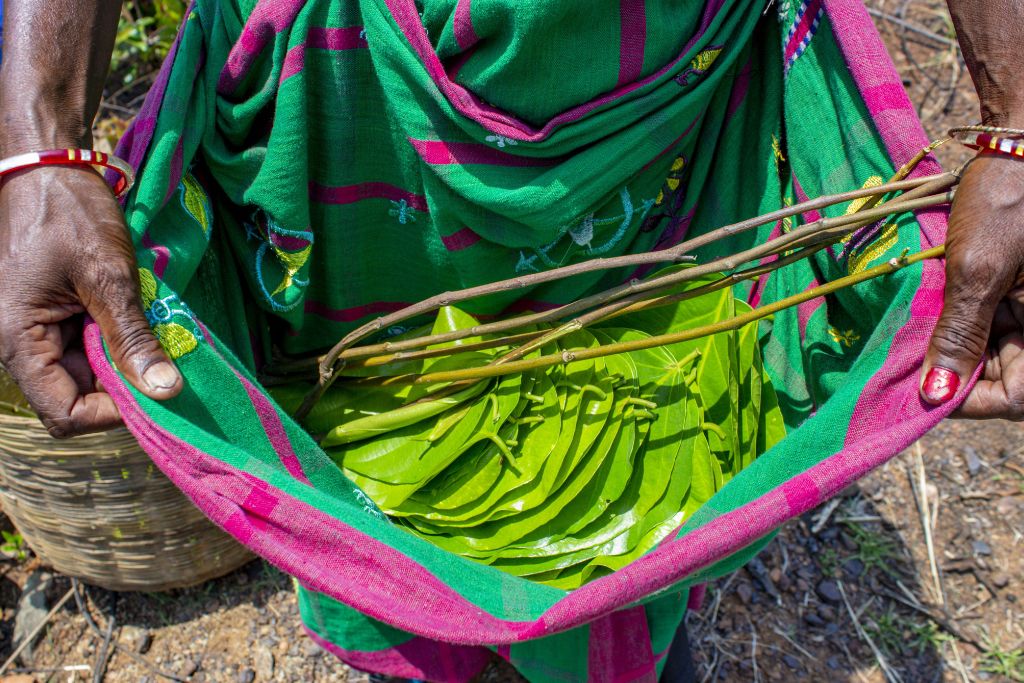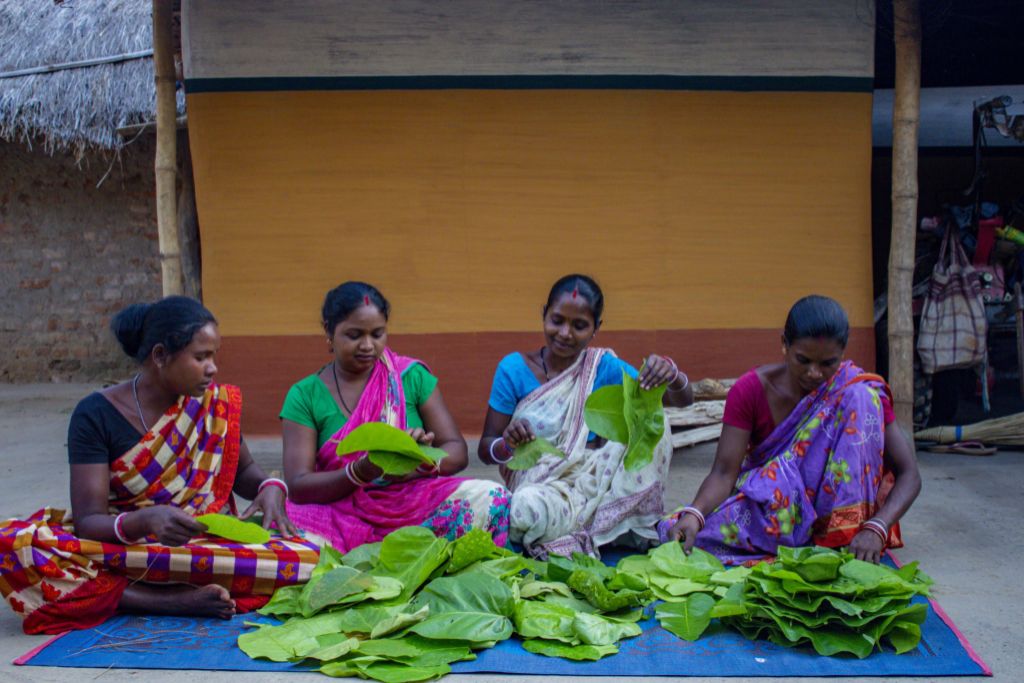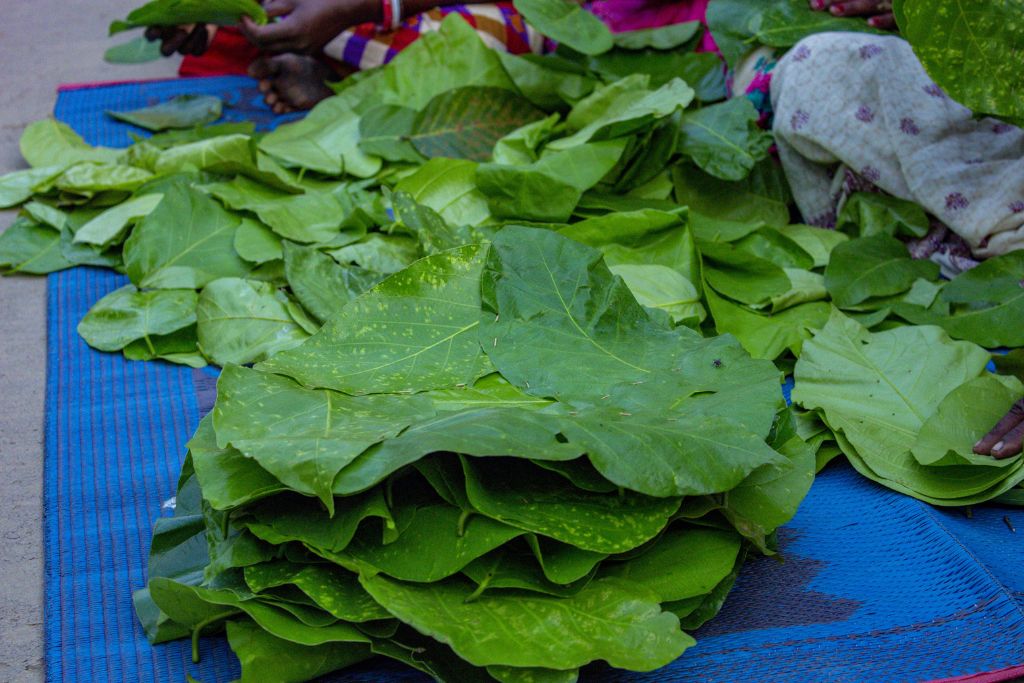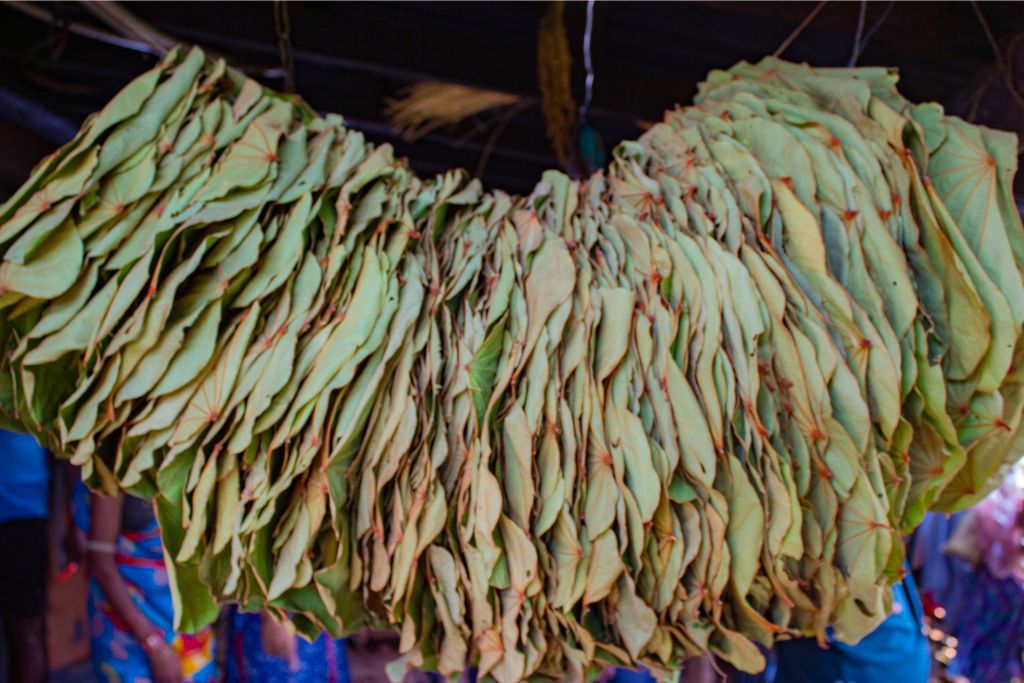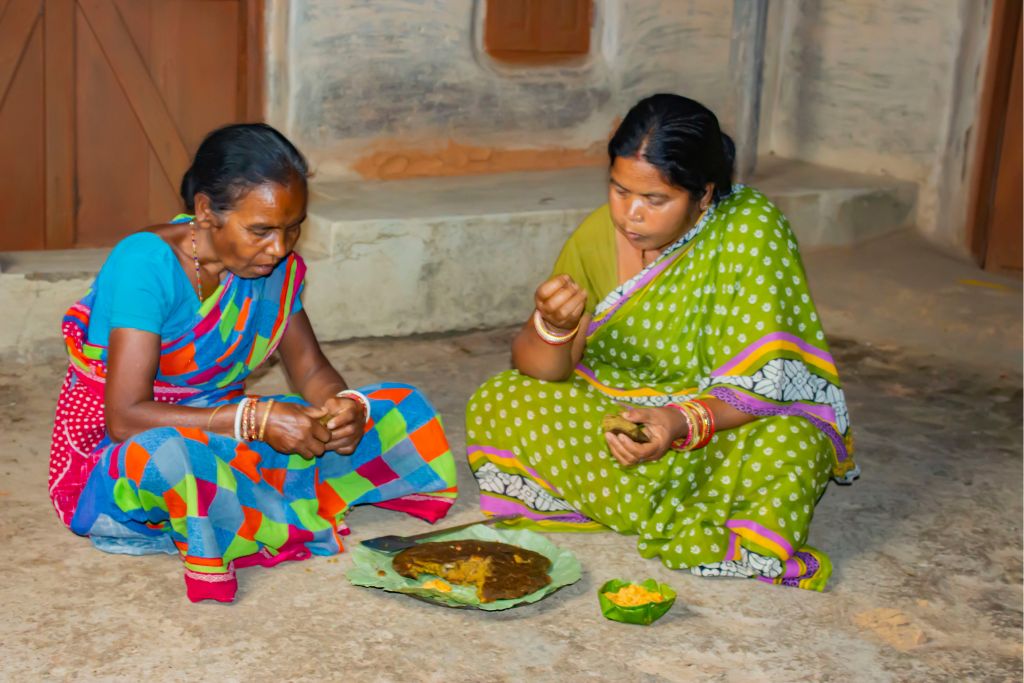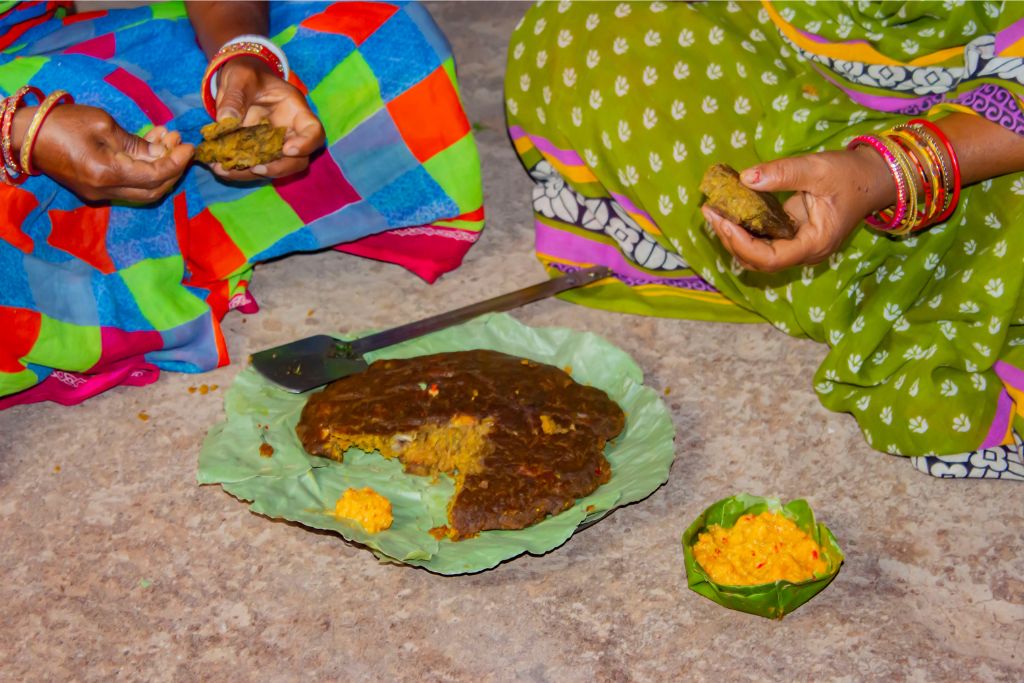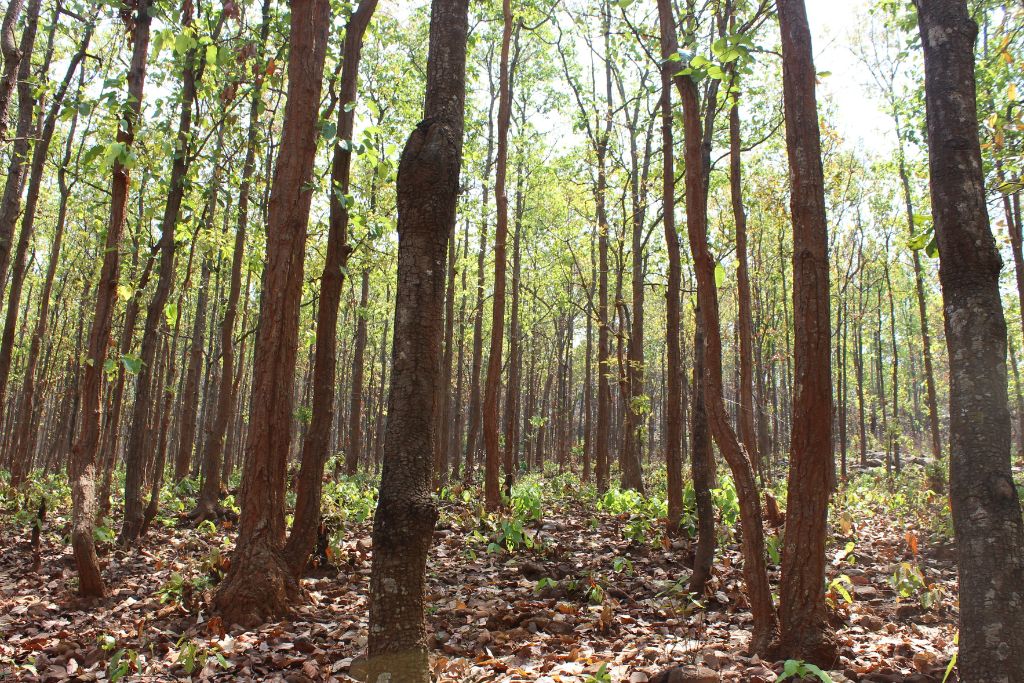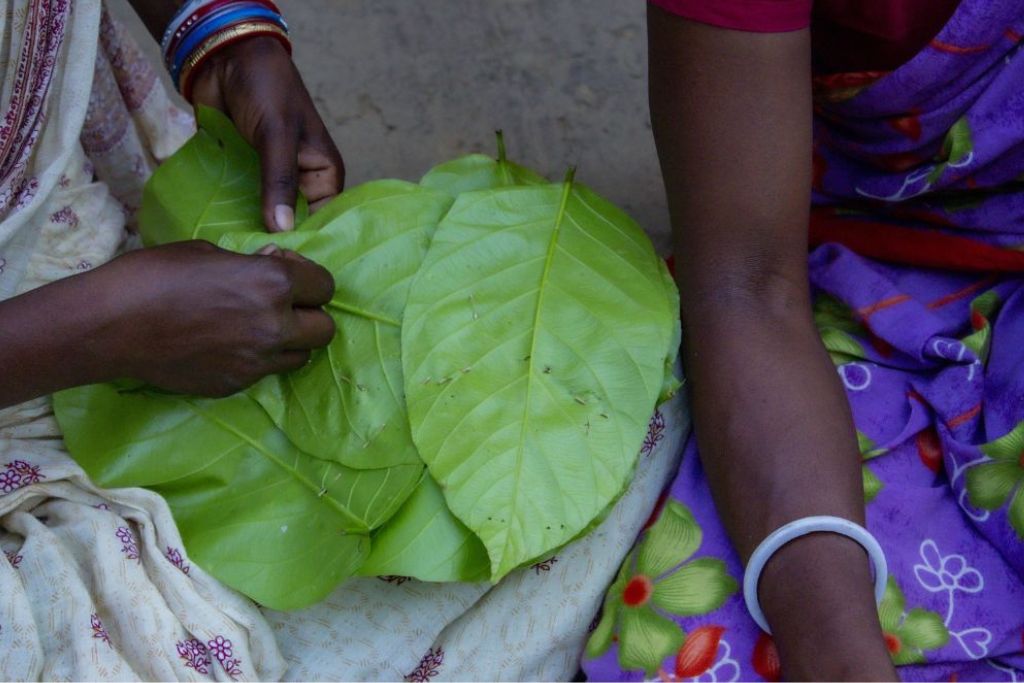
Sal-sufficient: Leafy tableware of Odisha’s Santhal tribe
Santhal women in Odisha's Mayurbhanj district are preserving their ancient heritage by making plates and bowls from sal leaves. However, the arrival of plastic products in remote tribal areas is fast wiping out the practice.
Santhal women gather sal leaves in the forest near Taladiha village in Mayurbhanj district of Odisha.
Along with sal leaves, women also collect sal twigs that have traditionally been used as toothbrushes by the tribal community.
Also Read | Jharkhand’s tribal women make natural cups and bowls but find no takers
Each leaf plate is typically made using 4-6 sal leaves, with fewer leaves required if they are large in size.
A bundle of sal leaf plates made by Santhal women.
Also Read | Making sal leaf plates lifts women out of poverty
The bundle of leaves is dried for about a week before it gets ready for use or sale at the local market.
Santhal women use sal leaf plates and cups to eat the local delicacy mandia chicken patra poda pitha with mango chutney.
Sal trees hold great importance in the livelihood and socio-cultural milieu of the Santhal community. They also consume sal tree seeds as a delicacy and celebrate the Baha festival when new sal flowers bloom.
Also Read | Could this Odisha tribal snack start a food trend?
Each Santhal village has a sacred grove called jaher or jahera, consisting of sal trees, believed to be the dwelling place of their deities. The community protects these groves from poachers and timber mafia groups.
Also Read | Jungle Warriors: Odisha women set up jungle huts to save forests
The lead image shows women stitching sal leaves together with thin bamboo sticks to create circular leaf plates.
Reporting and photography by Abhijit Mohanty, a Bhubaneswar-based journalist.
